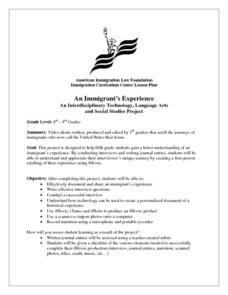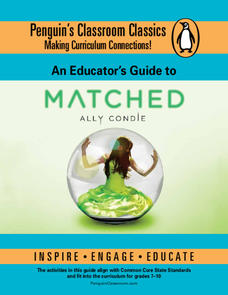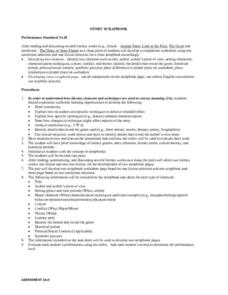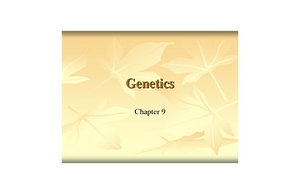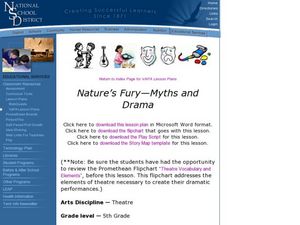Curated OER
Memoir Writing Based on Jerry Spinelli's Milkweed
Using chapter 1 of Jerry Spinelli's Milkweed, middle schoolers write a personal memoir based on Spinelli's style and a Six Trait writing activity. The lesson suggests several ways to activate prior knowledge, including a picture book and...
American Immigration Law Foundation
An Immigrant’s Experience
After interviewing an immigrant about their voyage to the United States and first impressions of the country, young learners create a fictional series of journal entries and design an iMovie depicting their interviewee's story.
Penguin Books
An Educator's Guide to Matched by Ally Condie
Even supposed Utopian societies have their flaws. Using an educator's guide, individuals explore the society Ally Condie creates in Matched. Reflective writing prompts double as discussion questions and cover key themes in the novel, as...
Curated OER
Analyzing Literary Devices
Eighth graders identify figurative language and poetry in this literary analysis lesson. Using Through the Looking Glass by Lewis Carroll and a YouTube video for "The Walrus and the Carpenter," young readers complete a literary device...
San Francisco Symphony
Going West
Now this sounds like a fun lesson! Youngsters learn about pioneer life and the Westward Movement. First, they listen to the Copland's "Appalachian Spring," and then they discuss the elements of music found in the piece. They...
Freeology
Daily Reading Log
Sometimes the hardest part of required reading for kids is keeping track of it. With a simple form, all they need to do is fill out each box after they have finished their reading, then turn it in at the end of the week.
Prestwick House
Rhyme and Repetition in Poe's "Annabel Lee"
Many and many a year ago Edgar Allan Poe crafted the chilling tale of "Annabel Lee." The poem is the perfect vehicle to introduce Poe's concept of unity of effect, the idea that every element in a poem or story should help to develop a...
CHPCS
The United States in the 1920s: The New Negro Movement and the Harlem Renaissance
Music, writing, and activism all tell the story of history! The resource uses these elements and more in a presentation to discuss the Jazz Age and Harlem Renaissance. Your class views biographies, discusses important events, and...
Curated OER
Cuentos
Students revise Spanish mystery stories. They sequence the events from a group's mystery story and suggest revisions for the setting. They revise their stories using the suggestions from classmates and describe characters in folktales....
Curated OER
Story Writing
Second graders review the basic elements of a story. Individually, they write their own original story as they use a software program to help them map out their ideas. With a partner, they exchange papers and read them for grammatical...
Curated OER
Essential Narrative Concepts
Students interact with the main concepts of a narrative text in the six lessons of this unit. The setting, prediction, retelling, sequencing, and the identification of the beggining, middle and end of a story are investigated.
Curated OER
Story Scrapbook
Pupils develop a comparison worksheet using one non fiction book and one fiction book they have read to be put into a class scrapbook. In their comparison students must have title, author, point of view, setting, characters, and other...
Curated OER
Camera Movement
High schoolers focus on different ways director and cinematographers use the camera to convey meaning, setting, tone, point of view, personal style, as well as telling a story.
Curated OER
Genetics
Students identify literary elements in each selection while learning about diversity and the struggle for equality in the United States. They use their knowledge to express the emotion and key literary elements in each piece through...
Curated OER
Journey to the Center of the Earth I
Students identify the elements of science fiction and write their own example. In this Journey to the Center of the Earth lesson students complete several activities about science fiction, authors and novels.
Curated OER
The Time I Got Lost
Third graders go through the writing process but substitute paper and pencil with the computer to create a story about "The Time I Got Lost".
Curated OER
Diwali
Students participate in the retelling of a story. After reading the story Diwali, students working in groups retell the significant events in the story through role play. In addition, they discuss the significance of the Hindu elements...
Curated OER
The Magic in Writing
Pupils watch a portion of a familiar film and write responses to a series of questions. They apply their observations to short stories.
Curated OER
Musicians and Vampires
Students practice techniques and strategies for understanding the parts of a story to help them remember what they've read. They review and analyze the elements of a story and how to find them first in a paragraph and then in a book.
Curated OER
Because of Winn Dixie: Water Management Practices
Fourth graders read the book Because of Winn Dixie and define the characters, setting, and plot. In this Winn Dixie lesson plan, 4th graders also identify quality water management techniques addressed in the story.
Curated OER
And Tomorrow's Forecast Is...
Students create original short stories that feature distinctive weather phenomena, such as rainbows, snowstorms, tornadoes, thunder and/or lightning. They use a story map, imbedded in this plane, to help them organize their story.
Curated OER
Nature’s Fury—Myths and Drama
Fifth graders explore the elements of theatre. In this dramatic performances lesson, 5th graders discuss the structural elements of theatre and dramatize "The Origins of the Season," an explanation myth.
Curated OER
Silly Sally
Students examine character traits. In this literary elements lesson, students read 2 short stories paying special attention to the actions and descriptions of the characters. Students add themselves as characters in the story.
Curated OER
Number the Stars The Holocaust
In this Language Arts worksheet, students complete a graphic organizer and write a paragraph about the novel Number the Stars. Students describe the time, place, and setting of the novel.

